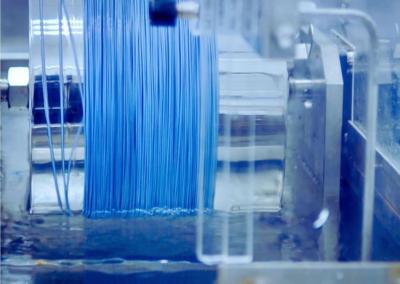Graphene oxide can help PEDOT conduct electricity, to enable efficient plastic supercapacitors
PEDOT, short for poly(3,4-ethylenedioxythiophene), is a flexible, transparent film often applied to the surfaces of photographic films and electronic components to protect them from static electricity. It is also found in touch screens, organic solar cells and electrochromic devices, such as smart windows. However, PEDOT’s potential for energy storage has been limited because commercially available PEDOT materials lack the electrical conductivity and surface area needed to hold large amounts of energy.
An example of how EDOT monomer vapors react with a droplet of graphene oxide and ferric chloride to form PEDOT nanofibers. Image credit: UCLA
UCLA chemists have addressed these challenges with an innovative method that makes use of graphene oxide to control the morphology of PEDOT to grow nanofibers precisely. These nanofibers exhibit exceptional conductivity and expanded surface area, both of which are crucial for enhancing the energy storage capabilities of PEDOT. This approach demonstrates the potential of PEDOT nanofibers for supercapacitor applications.





